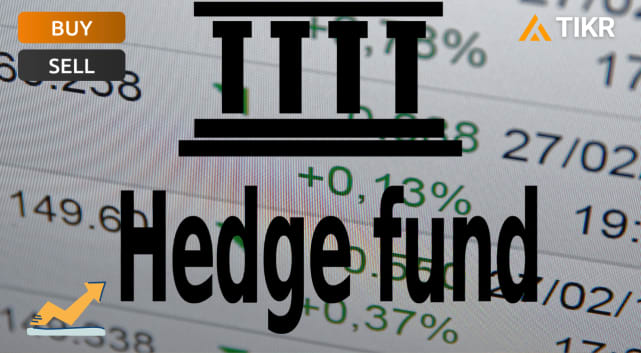Insider selling makes headlines because it taps into a basic investor fear: “What do they know that we don’t?” Executives and directors do have better visibility into their company’s trajectory, but they also sell stock for perfectly normal reasons, diversification, tax withholding, estate planning, or routine 10b5-1 programs. Treat every sale as a red flag and you’ll miss plenty of healthy companies; ignore selling entirely and you can miss early warnings that the story is changing.
The right approach is disciplined and contextual. First, confirm what was sold and how (open-market sale, option exercise, or tax withholding). Next, ask who sold and how much (title, ownership change, dollar value relative to prior holdings).
Finally, decide why it might have happened by aligning the sale with fundamentals, guidance, and the company’s calendar. TIKR makes that workflow straightforward by keeping insider transactions, ownership, financials, valuation history, and transcripts in one place, so you can evaluate selling in minutes, not hours.
Why Insider Selling Matters (and When It Doesn’t)
Insider selling matters most when it changes the economic alignment between leadership and shareholders. If a CEO reduces their stake materially after years of accumulation, that’s different from an annual sale that funds taxes or a pre-scheduled 10b5-1 program.
It also matters when selling clusters across several senior executives in a short window, especially if it coincides with deteriorating margins, slowing growth, or rising leverage. Those patterns can precede estimate cuts or multiple compressions.
On the other hand, many sales are noise as option exercises can inflate the gross “sold” number even though net ownership barely changes. RSU vesting often triggers automatic tax withholding, which appears as a “sale” on filings.
Seasonality matters too: trading windows open after earnings, so you’ll often see bursts of activity with no informational content. Your job is to separate routine mechanics from informative signals by reading the filing type, transaction code, and the insider’s resulting stake.
Step 1: Find the Official Source (Form 4, Not Rumors)

Start with the facts. U.S. insiders must report transactions on SEC Form 4 within two business days. In TIKR, navigate to the company and open the insider transactions view to find the insider’s name and title, date, number of shares, price, type, and file type (Form 144, Form 4, etc.). This immediately tells you whether the sale was an open-market transaction or tied to equity compensation.
Finding and reading the underlying Form 4 through sec.gov is worth the extra minute, especially for the transaction codes. An “S” generally marks an open-market sale. Codes linked to option exercises or tax withholding indicate something very different from an elective disposal.
Track the most recent insider transactions with TIKR (It’s free) >>>
Step 2: Identify the Type of Sale (Elective vs. Automatic)
The most common pitfall is treating every sale as discretionary, as many are not. Rule 10b5-1 trading plans pre-schedule sales to avoid accusations of trading on non-public information. RSU vesting events often trigger automatic share withholding to satisfy taxes. Option exercises can involve “sell-to-cover” mechanics that show up as sales but don’t reflect a change in conviction.
Distinguishing these buckets changes the interpretation. A large, open-market sale outside a pre-set plan carries more information than an equal-sized withholding on vest day.
If the insider sells the same week every quarter in similar amounts, you’re likely looking at plan-driven activity. If the pattern breaks, bigger size, different timing, multiple officers the same week, that’s when it deserves more attention.
Step 3: Measure the Magnitude (Dollars and Ownership Change)
Size matters, but context matters more. A $2 million sale is meaningful for a mid-level VP and trivial for a founder-CEO with billions at stake. What you want to know is how much the insider’s stake changed. Locating a Form 4 will show you both shares sold and shares owned after the transaction. If ownership drops materially, say, a double-digit percentage of the insider’s holdings, that’s a stronger signal than a small trim.
Look at dollars as well as percentages, and look across time. TIKR’s history helps you see whether the insider has been a net seller over the last 6–12 months or if this is a one-off. If several senior officers each reduce holdings by meaningful amounts within a short window, the aggregate magnitude can be more informative than any single trade.
Step 4: Align Sales with the Fundamentals and Calendar

A sale only “means” something if it lines up with the business, so cross-check recent filings against margins, growth, guidance, and leverage. If fundamentals are improving and the company just reaffirmed its outlook, sales might be a housekeeping item. If gross margin is compressing, working capital is stretching, or net debt is rising and insiders are selling into strength, the timing raises the bar for your thesis.
Calendar context matters too. Most companies have open trading windows after earnings. Sales during that window are common and often non-informative. But large sales immediately before a known transition, like a major product cycle, regulatory decision, or announced restructuring, deserve closer scrutiny.
In TIKR, you can flip between financials and valuation history to see whether narrative and numbers rhyme with insider behavior.
See key dates for 50K+ global stocks with TIKR’s Events Calendar (It’s free) >>>
Step 5: Watch for Clusters, Not One-Off Sales
One sale can be noise, but clusters are harder to ignore. When multiple senior insiders, the CEO, the CFO, and key business unit leaders, sell significant amounts in close succession, it hints at a shared view of risk, valuation, or a coming slowdown. Clusters are even more notable if they follow a big run-up and occur at valuations materially above the company’s historical averages.
TIKR’s consolidated view helps you spot clustering quickly. Scan the recent months for overlap, then look at the valuation tab to check whether insiders are selling into a multiple that sits well above the five-year range.
If clustered selling pairs are stretched and fundamentals are softening, you’re looking at a cleaner signal. If it pairs with neutral valuation and unchanged guidance, it may still be benign.
Common Misreads to Avoid
The first misread is equating all sales with bearish signals. Plenty of executives prudently diversify after years of vesting, just as any investor would. The second is ignoring the net effect. An insider can exercise options, sell shares to cover taxes, and still end the day with a larger stake. The third is confirmation bias: seeing a sale after you already disliked a stock can feel like validation, but your process should weigh the sale against fundamentals, not emotions.
Another frequent error is overweighing tiny sales. A token disposal that changes ownership by a fraction of a percent doesn’t tell you much. Focus your energy where the incentives truly shift: large, discretionary sales that alter alignment, or patterns across several leaders over time. These are the places where insider selling has historically carried the most information content.
A Quick Example of Process in Practice
Suppose a software company just posted solid results. Within a week of the trading window opening, the CFO sells $1.2 million worth of shares under a disclosed 10b5-1 plan, reducing total ownership by 2%. Two directors sell small amounts on the same day, each tied to RSU tax withholding. On TIKR, valuation sits near the five-year average, free cash flow is rising, and leverage is minimal. That setup looks routine, not ominous.
Now flip it. The CEO and CFO each sell 20–30% of their holdings in open-market sales not flagged as plan-driven, followed by two large sales from key segment heads. This occurs after a 60% rally that pushed valuation well above the five-year range, while margins have plateaued, and deferred revenue growth is slowing. That cluster would move the sale from “background” to “thesis-relevant.”
Why TIKR Makes This Easy
Before consolidated research platforms, investors had to bounce between sources, checking insider filings on the SEC’s EDGAR site, then hopping to other websites to review financials, margins, leverage, and valuation. That process made it easy to miss the big picture.
TIKR doesn’t host or display Form 4 filings directly, but it gives you everything you need to interpret those filings intelligently. Once you know that insider selling is taking place, TIKR lets you evaluate the broader context: Are margins tightening? Has leverage crept up? Is valuation stretched relative to history or peers? You can pull up multi-year financials, cash-flow trends, and ratio charts in seconds to see whether the fundamentals confirm or contradict the insider activity.
That’s what makes TIKR valuable. It turns isolated data points from filings into a coherent story about the business. With all the company-level context in one place, you can quickly assess whether insider selling is routine or might signal something deeper.
Quickly see whether insiders are selling with TIKR (It’s free) >>>
TIKR Takeaway
Insider selling isn’t a siren; it’s a signal, one that gets clearer when you know how to read it. TIKR brings together the key pieces you need: the raw Form 4 details, the insider’s resulting ownership, transaction history across time, and the company’s fundamentals and valuation backdrop. In minutes, you can decide whether a sale is routine or a reason to re-underwrite your thesis.
Suppose you invest like an owner, focusing on alignment, cash generation, returns, and realistic expectations. In that case, TIKR gives you the visibility to keep management’s incentives in full view and to anchor your analysis to the numbers.
FAQs
How can I tell if an insider sale is routine or meaningful?
You can tell if an insider sale is routine or meaningful by starting with the transaction type and cadence. Pre-scheduled 10b5-1 sales and RSU tax withholdings are often routine. Open-market sales that materially reduce an executive’s ownership, especially outside a typical cadence, carry more information. In TIKR, check the description, the size relative to prior holdings, and whether similar sales have happened on a regular schedule.
Do small insider sales matter?
Small insider sales usually do not matter. Small trims that change ownership by a fraction of a percent rarely signal anything. Focus on the percentage change in the insider’s stake and the aggregate selling across leadership. Large, clustered reductions are more likely to be informative than tiny, isolated trades.
What if insiders are selling but fundamentals look strong?
In the case of selling, even though fundamentals look strong, context wins. If margins, free cash flow, and guidance are trending well and valuation is reasonable, selling may reflect diversification or plan mechanics. Could you revise your view if selling accelerates, becomes clustered among top officers, or coincides with deteriorating KPIs? TIKR lets you verify both the transactions and the fundamentals side by side.
Are option exercises and sell-to-cover transactions bearish?
Option exercises and sell-to-cover transactions are not necessarily bearish market moves. Option exercises often create tax obligations, and sell-to-cover trades are a standard way to meet them. What matters is the net effect: Did the insider end up with more or fewer shares after the transaction? Form 4 shows post-transaction ownership, and TIKR clearly displays that outcome.
Should insider selling change my investment decision on its own?
No, insider selling should not change your investment decision. Treat it as one input among many. Insider selling is most decision-relevant when it aligns with stretched valuation, softening fundamentals, or a cluster across multiple leaders. Use TIKR to connect those dots; if they don’t connect, keep the sale in the background and rely on your fundamental work.
AI Compounders With Massive Upside That Wall Street Is Overlooking
Everyone wants to cash in on AI. But while the crowd chases the obvious names benefiting from AI like NVIDIA, AMD, or Taiwan Semiconductor, the real opportunity may lie in the AI application layer, where a handful of compounders are quietly embedding AI into products people already use every day.
TIKR just released a new free report on 5 undervalued compounders that analysts believe could deliver years of outperformance as AI adoption accelerates.
Inside the report, you’ll find:
- Businesses already turning AI into revenue and earnings growth
- Stocks trading below fair value despite strong analyst forecasts
- Unique picks most investors haven’t even considered
If you want to catch the next wave of AI winners, this report is a must-read.
Click here to sign up for TIKR and get our full report on 5 undervalued compounders completely free.
Looking for New Opportunities?
- Discover which stocks billionaire investors are purchasing, so you can follow the smart money.
- Analyze stocks in as little as 5 minutes with TIKR’s all-in-one, easy-to-use platform.
- The more rocks you overturn… the more opportunities you’ll uncover. Search 100K+ global stocks, global top investor holdings, and more with TIKR.
Disclaimer:
Please note that the articles on TIKR are not intended to serve as investment or financial advice from TIKR or our content team, nor are they recommendations to buy or sell any stocks. We create our content based on TIKR Terminal’s investment data and analysts’ estimates. Our analysis might not include recent company news or important updates. TIKR has no position in any stocks mentioned. Thank you for reading, and happy investing!






